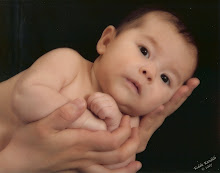Article on KD long term health
PEDIATRICS Vol. 111 No. 3 March 2003, pp. 579-583....
Physical and Psychosocial Health in Children Who Have Had Kawasaki Disease ....Annette L. Baker, MSN, PNP*.., ..Kimberlee Gauvreau, ScD*.., ..Jane W. Newburger, MD, MPH*.., ..Robert P. Sundel, MD*.., ..David R. Fulton, MD*.. and ..Kathy J. Jenkins, MD, MPH*.. * From the Department of Cardiology, Children’s Hospital, Boston, Massachusetts; and Department of Pediatrics, Harvard Medical School, Boston, Massachusetts ....-->.. Objective. The purpose of this study was to examine the physical and psychosocial well-being of children who have had Kawasaki disease (KD), including the influence of coronary artery status on health and health perceptions. Methods. The Child Health Questionnaire (CHQ) measures overall physical and psychosocial well-being in children 5 to 18 years. To study the long-term impact of KD on overall health status, we mailed the CHQ to patients without a history of coronary artery abnormalities (normal group), with regressed aneurysms (regressed group), with current coronary aneurysms <8 aneurysms =" src=" border="0">8 mm (giant group). Results. Of 201 questionnaires mailed, 174 were delivered and 110 (63%) were completed. Median age (range) at completion was 10.5 years (5.1–17.9 years) and at illness onset was 3.1 years (0.2–12 years). There were no significant differences in psychosocial summary scores in any of the Kawasaki groups when compared with the US population sample. Physical summary scores were also similar to the US population sample in the normal coronary, mild-moderate aneurysm, and regressed aneurysm groups. However, the giant aneurysm group had significantly lower physical summary scores compared with the US population sample. Among subscales, general health perceptions in the KD groups were lower than in the US population sample, reaching statistical significance in all but the mild to moderate aneurysm group. In addition, parents whose children have had KD reported a higher proportion of anxiety issues, allergies, and orthopedic/bone/joint issues in their children than did the general US population sample. We did not find any difference in the incidence of attentional, behavioral, or learning issues when compared with the US population sample. Conclusions. KD patients without coronary artery aneurysms were similar to the general population in their general physical and psychosocial health. However, the parents of children in all KD groups reported lower general health perceptions than parents in the US population sample, suggesting that long-term concerns about their children’s health exist regardless of overall health status. In addition, children with giant coronary artery aneurysms had lower overall physical summary scores. Key Words: Kawasaki disease • Child Health Questionnaire • functional health status • quality of life Abbreviations: KD, Kawasaki disease • CHQ, Child Health Questionnaire • JRA, juvenile rheumatoid arthritis • ADHD, attention-deficit/hyperactivity disorder
Received for publication May 7, 2002; Accepted Sep 11, 2002.
Saturday, May 2, 2009
Subscribe to:
Post Comments (Atom)




































No comments:
Post a Comment